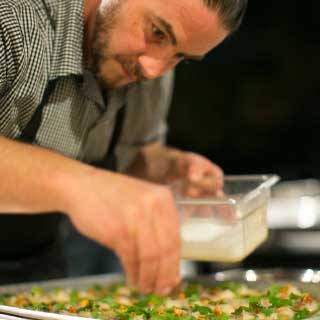Food technology is a branch of the food industry that involves the development and application of scientific concepts and principles for the production, preservation, and safety of food. It is a field of study that combines knowledge from different areas such as chemistry, biology, engineering, and nutrition to develop improved food products and processes. By applying food technology, food manufacturers can produce safe and nutritious food products that meet the market’s demands.
Overview of the field
Food technology is the application of the principles of science and engineering to the processing, preservation, safety, packaging, and distribution of food products. It involves the application of principles from chemistry, biology, nutrition, engineering, and other sciences to food processing and production. The main goal of food technology is to develop food products that are safe, nutritious, and of good quality, while also taking into account economic, environmental, and social concerns.
Food tech innovations
Foodie tech innovations are the use of technology to improve the quality, safety, and efficiency of food production and processing. Examples of food tech innovations include using robots to automate the packing of fruits and vegetables, using 3D printing to create food products, and using artificial intelligence to analyze data from sensors to detect food spoilage. In addition, advances in biotechnology are allowing food producers to create healthier and more sustainable food products.
History of Food Technology
The origins of food technology can be traced back to the 19th century, when the first food processing technologies were developed. Since then, the field has grown rapidly, with the introduction of new technologies such as canning, freezing, and drying. These advances have allowed food producers to produce a greater variety of foods in faster and more efficient ways.
Evolution
Over the years, food technology has evolved to include new technologies such as genetic engineering, nanotechnology, and bioprocessing. These advances have allowed food producers to produce foods that are healthier and more sustainable, while also improving food safety and quality.
Applications of Food Technology
Food preservation
Food preservation is an essential aspect of food technology. Preservation techniques such as canning, freezing, drying, and irradiation are used to extend the shelf life of food products. These techniques also help to maintain the quality and nutrition of the food.
Food production
Food production is the process of transforming raw ingredients into food products. Food technology is used to improve the efficiency and productivity of food production by automating certain manufacturing processes.
Food safety
Food safety is essential to ensure that food products are safe for consumption. Food technology is used to detect and prevent food-borne illnesses, as well as to develop food safety standards and regulations.
Food quality
Food quality is important to ensure that food products are nutritious and safe for consumption. Food technology is used to develop methods to measure and improve food quality.
The Benefits of Food Technology
Healthier foods
By applying food technology, food producers can develop healthier and more nutritious food products. This includes the use of genetic engineering to create foods with enhanced nutritional value, as well as the use of nanotechnology to develop healthier food packaging materials.
More sustainable production
Food technology can also be used to reduce the environmental impacts of food production. This includes the use of bioprocessing to produce food products with lower carbon emissions, as well as the use of renewable energy sources to power food production facilities.
Increased efficiency
Food technology can be used to reduce the cost and time required to produce food products, as well as to increase the efficiency of food production facilities. This can result in lower prices for food products and improved access to food for consumers.
Challenges in Food Technology
Cost and Accessibility
The cost of food technology can be a barrier for smaller food producers, as well as for those in developing countries. In addition, food technology may not be accessible to all consumers, as some countries may lack the infrastructure or resources to implement food technology.
Regulations
The regulation of food technology can be a challenge, as food safety and quality standards must be maintained to ensure the safety and quality of food products.
Creative ways to reduce food waste
Food waste is a growing global problem, according to Global food waste statistics over 1.3 billion tons of food wasted worldwide in 2022. Food technology can be used to reduce food waste by developing creative solutions such as using food waste for animal feed or using 3D printing to create food products.
Conclusion
Food technology is a field of study that combines knowledge from multiple disciplines to develop improved food products and processes. It is used to develop food products that are safe, nutritious, and of good quality, while also taking into account economic, environmental, and social concerns. In addition, food technology can be used to reduce food waste, improve food safety and quality, and increase the efficiency of food production. Despite the challenges posed by cost and regulations, food technology can have a positive impact on global food production and consumption.





